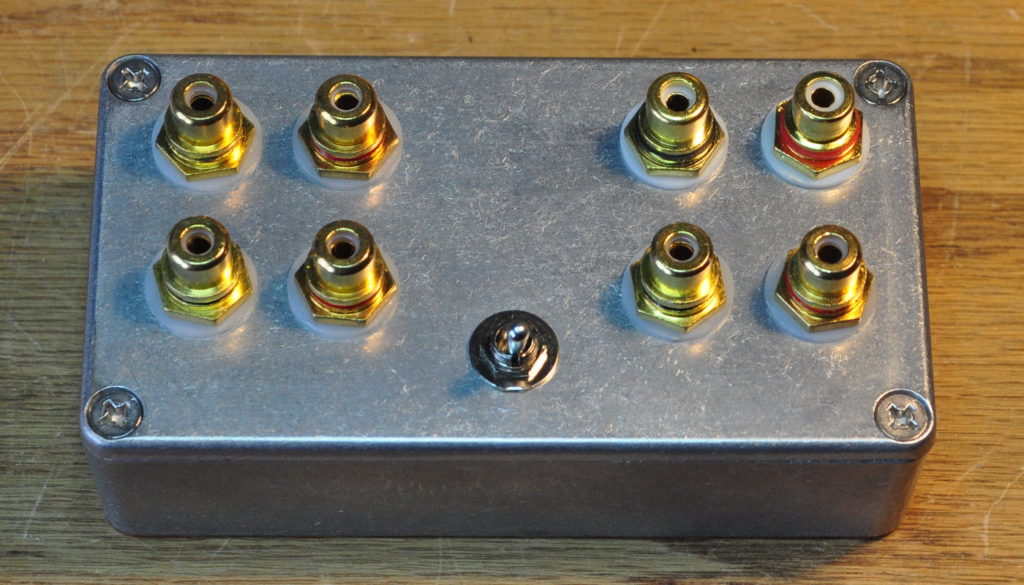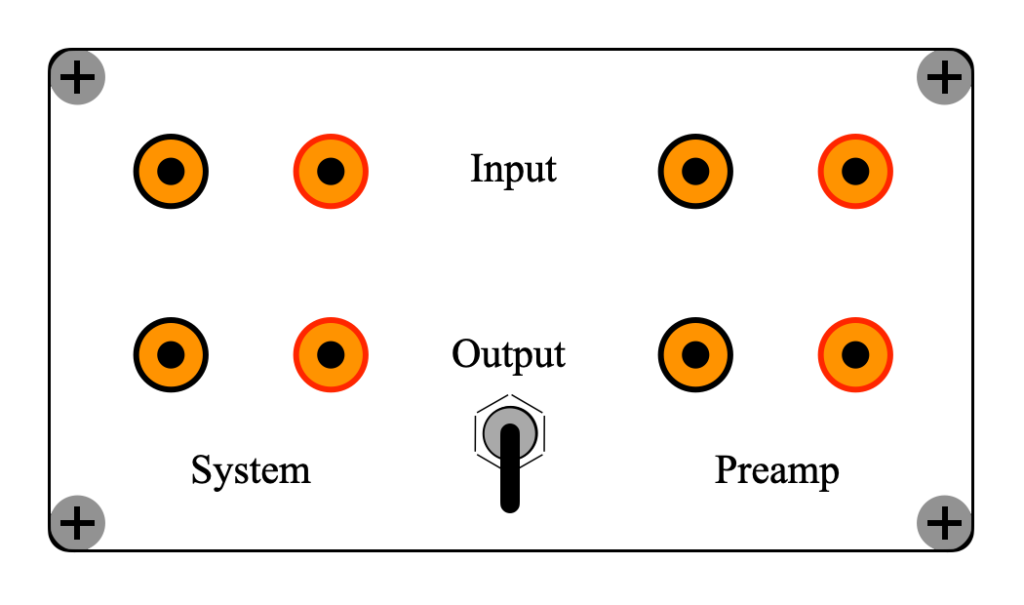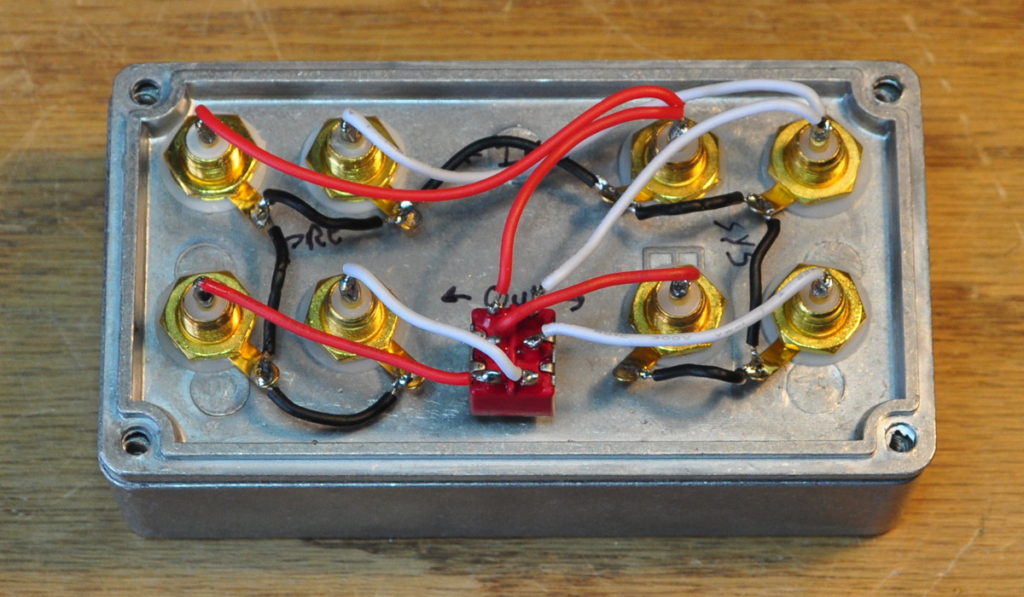Now that the color preamp is done (knock wood), I’ve been trying it out on different amplifier and speaker combinations. But there is a little issue. Unknown to most people is that your brain can really only hold onto an unadulterated memory for a minute or so at the very longest. Most of the time you’ve got less than about 30 seconds. After this interval your brain starts throwing out what it considers to be extraneous information leaving only impressions. And this is a big issue when attempting to make subjective comparisons.
A further complication is that after this interval, every time you try to recall the memory, your brain slightly alters it. This alteration can also be strongly influenced by what you are doing or thinking at the time you attempt to remember. This is one of the reasons that eye witness accounts of major evens can be so radically different. Each persons’ brain throws out different information leaving different longer lasting impressions. And then when the witnesses attempt to recall the memories, many of the details (which you really don’t “recall” but your brain just fills in at time of recall) are radically different. “The car was black”, “the car was tan”, “the man was clean shaven”, “the man had a beard”, “maybe he had a mustache”; ad infinitum. Ask any police officer who’s had to record eye witness accounts. Most witnesses construct radically different accounts of the exact same events even when they were standing just a few feet apart.
Which brings me back to my amp comparisons. I was aware of this problem and at first developed an approach. I would configure the setup so I could simply swap one pair of RCA plugs as quickly as possible. This didn’t work very well. Regardless of how fast the swap was made, it usually took at least 15s to 20s, and I was always left with vague questions about what I heard before and then questions about which configuration was which. I finally decided I needed a way to swap the color preamp in and out nearly instantaneously. This led me to build this little gadget.
This allows me to flip the preamp in and out of the system with the flick of a switch. Comparisons are near instantaneous. This really helped me settle exactly how the color preamp was affecting the sound of the system as a whole.
This box is really rather simple. I’ll refer to the following layout diagram.
The connections to the system are on the left and connections to the preamp on the right. The top row are inputs and the bottom row outputs. So upper left is the signal coming into the system; for example from an iPod or CD player. The lower left is the output to the power amp. The upper right goes to the color preamp input and the lower right comes from the preamp output. When the switch is down the signal goes directly to the power amp. When the switch is up, it goes through the color preamp.
The other nice thing about this setup is that you can have someone else, out of your sight line, make the changes and have them query you about which configuration you like best. This is great for truly “blind” testing.
The wiring is really not that complicated the input signal always goes to the preamp, and the switch just controls whether the signal input or preamp output goes to the power amp. With the preamp set for neutral gain (i.e. 0dB) there isn’t even any volume change when the switch is made. Here’s what it looks like on the inside.
The whole thing fits nicely in a BUD CU-124 cast aluminum box. I first tried it on the little class-d amp on the work table in my office. Here it is in testing.
I tried it with a number of different tracks. Sometimes I’d leave it in one configuration for a minute or two, sometimes I would switch it in and out after just a few seconds. I tried it with class-d amps and a couple of tube amps. I also swapped out speakers on the class-d amplifiers to see how much difference that made. I learned a lot.
This is a great way to make some direct comparisons when trying out new components in your systems. And I was able to cobble together this little jig entirely from parts on hand. I didn’t try it, but this would work equally well for the 4S Universal preamp or a frequency equalizer.
As always, questions and comments are welcome.





I am not a big believer in A/B testing. You really can’t make a good comparison by listening a few seconds at a time switching back and forth. I found that in my case, I need to listen to a given setup for several days to see if the sound is pleasing or not. That is my main criterion – do I like the sound or not.
I actually agree with you. I have found that A/B rapid testing can only let you experience the differences, but not really evaluate the quality of each. I agree that to determine what you prefer takes a longer more immersive experience. The majority of what I learned about the A/B testing I did with the color preamp was more about under what circumstances the differences came through rather than the quality of those differences.
For example, I decided that the quality of the speakers is paramount to determining the differences in sound with the coloring preamp. If the speakers didn’t produce a detailed and fairly accurate sound in the first place, then the differences between in and out were much more difficult to determine.
Actually, the speakers are everything. They need to be a good match to the amplifier, a good match to the room, properly placed in the room, and a good match to the type of music being listened to. And, most importantly, they must have a pleasing to you tonal quality.